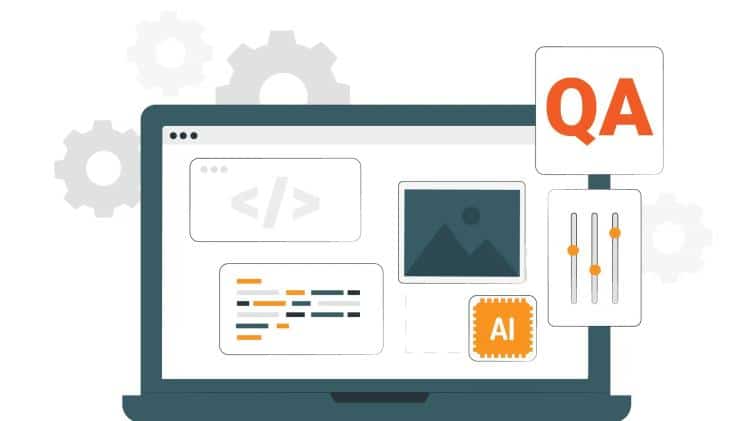Revolutionizing Quality Assurance with AI-Native Test Automation

AI-native test automation is transforming how software teams approach quality assurance, embedding artificial intelligence at the core of testing processes to make them more efficient, intelligent, and adaptive. Unlike traditional tools that bolt on AI as an afterthought, AI-native platforms are built from the ground up with AI, allowing for seamless integration that anticipates changes, reduces maintenance, and enhances coverage. This approach empowers teams to deliver high-quality software faster, meeting the demands of agile development and continuous delivery.
Understanding AI-Native Test Automation
AI-native test automation refers to platforms where AI is the foundational element, not an add-on. It uses machine learning, natural language processing, and other AI technologies to automate test creation, execution, and maintenance. For example, these platforms can analyze application behavior, predict potential issues, and adjust tests dynamically.
The distinction from traditional automation is profound. Conventional tools rely on static scripts that break with UI changes, requiring manual updates. AI-native systems learn from executions, self-healing tests by understanding context and intent.
This paradigm is gaining traction as software complexity increases. With microservices, APIs, and multi-platform apps, manual or script-based testing falls short. AI-native automation addresses this by providing intelligent insights and automation that evolves with the application.
The Role of AI in Modern Testing
AI plays multiple roles in testing. In test generation, it can create scripts from user stories or requirements using natural language. For instance, platforms convert plain English descriptions into executable tests, reducing authoring time.
During execution, AI optimizes runs by prioritizing high-risk areas based on historical data. It also handles flakiness by retrying intelligently or adjusting timeouts.
Maintenance is where AI shines brightest. Auto-healing detects changes in elements and updates locators automatically, minimizing downtime.
Analytics powered by AI provide deep insights, correlating test failures with code changes or identifying patterns in defects.
In visual testing, AI compares UIs across versions, ignoring insignificant differences while flagging functional issues.
Advantages of AI-Native Approaches
The advantages are multifaceted. Speed is a primary benefit; AI accelerates every phase, from creation to analysis, enabling faster releases.
Reliability improves as AI reduces false positives and negatives, ensuring tests reflect real-user scenarios.
Cost efficiency comes from lower maintenance and broader coverage without additional resources.
Scalability is inherent, with AI handling increased complexity without proportional effort.
Collaboration enhances as non-technical stakeholders can participate via low-code interfaces.
Innovation is fostered, allowing teams to focus on creative problem-solving rather than routine tasks.
Leading AI-Native Test Automation Platforms
Several platforms exemplify this approach. mabl is a leader, offering a unified platform for web, mobile, API, and performance testing with deep AI integration.
TestRigor uses generative AI for plain English tests, boosting efficiency.
Harness provides intent-based test creation with self-healing.
Applitools infuses AI in end-to-end testing for flawless UIs.
Testim offers AI-powered stability for fast authoring.
Virtuoso combines NLP and RPA for self-healing tests.
These tools demonstrate AI’s transformative power.
Implementing AI-Native Test Automation
Implementation starts with assessment. Evaluate current processes to identify automation gaps.
Choose a platform aligned with your stack and goals.
Train teams on AI features to maximize utilization.
Start with pilot projects, expanding based on success.
Monitor metrics like test coverage and failure rates to refine.
Integrate with CI/CD for seamless workflows.
Challenges and Solutions
Challenges include data privacy, as AI needs access to sensitive info; solutions involve robust security.
Skill gaps can be addressed with training.
Dependency on AI decisions requires human oversight for critical tests.
Overcoming these ensures smooth adoption.
Future of AI in Test Automation
The future includes agentic AI, where agents autonomously handle testing.
Integration with GenAI for code generation will blur development and testing.
Predictive maintenance will prevent issues pre-emptively.
These advancements promise even greater efficiency.
Case Studies in AI-Native Automation
Companies like Google have built AI-native frameworks for resilient testing.
mabl users report accelerated innovation with quality assurance.
These examples highlight practical benefits.
Conclusion: Adopting AI-Native for Superior Quality
AI-native test automation is not just a trend; it’s the future of quality assurance, offering unparalleled efficiency and intelligence.



